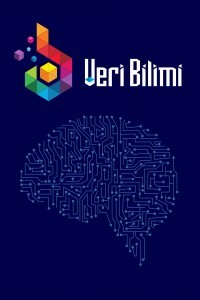Sis Kaldırma Algoritmalarına Genel Bir Bakış
Görüntü İşleme, Sis Kaldırma, Görüntü Onarma, Kontrast İyileştirme, Dark Channel Prior Algoritması
An Overview of Fog Removal Algorithms
Image Processing, Fog Removal, Image Restoration, Contrast Enhancement, Dark Channel Prior Algorithm,
___
- Narasimhan, Srinivasa G. and Shree K. Nayar. “Chromatic framework for vision in bad weather.” IEEE Conference on Computer Vision and Pattern Recognition. CVPR 2000 598-605, 2000.
- Kaiming He, Jian Sun, & Xiaoou Tang. “Single image haze removal using dark channel prior”. IEEE Transactions on Pattern Analysis and Machine Intelligence, 2011.
- Levin, A., Lischinski, D., Weiss, “Y. A closed-form solution to natural image matting”. IEEE Trans. Pattern Anal. Mach. Intell. 30(2), 228–242, 2007.
- Tripathi, A., Mukhopadhyay, S. “Single image fog removal using anisotropic diffusion”. IET Image Process. 6(7), 966–975, 2012.
- Gonzalez, R.C., Woods, R.E.: Digital Image Processing, vol. 2. Addison-Wesley, Boston, 1992.
- He, K., Sun, J., Tang, X. “Guided image filtering”. IEEE Trans. Pattern Anal. Mach. Intell. 35(6), 1397–1409, 2013.
- Li, Z., Zheng, J. “Edge-preserving decomposition-based single image haze removal”. IEEE Trans. Image Process. 24(12), 5432– 5441, 2015.
- Salazar-Colores, S., Cabal-Yepez, E., Ramos-Arreguin, J. M., Botella, G., Ledesma-Carrillo, L. M., & Ledesma, S. “A fast image dehazing algorithm using morphological reconstruction”. IEEE Transactions on Image Processing, 28(5), 2357-2366, 2018.
- C. Ancuti, C. O. Ancuti, C. De Vleeschouwer and A. C. Bovik, "Day and Night-Time Dehazing by Local Airlight Estimation," in IEEE Transactions on Image Processing, vol. 29, pp. 6264-6275, 2020
- Ngo, D., Lee, G. D., & Kang, B. “Improved color attenuation prior for single-image haze removal”. Applied Sciences, 9(19), 4011. 2019.
- Q Zhu, Q.; Mai, J.; Shao, L. “A Fast Single Image Haze Removal Algorithm Using Color Attenuation Prior”. IEEE Trans. Image Process, 24, 3522–3533, 2015.
- Ngo, D., Lee, G. D., & Kang, B., “Haziness degree evaluator: A knowledge-driven approach for haze density estimation”. Sensors, 21(11), 3896, 2021.
- Chen, L., Tang, C., Xu, M., & Lei, Z., “Enhancement and denoising method for low-quality MRI, CT images via the sequence decomposition Retinex model, and haze removal algorithm”. Medical & Biological Engineering & Computing, 59(11), 2433-2448, 2021.
- Huang, S.C., Chen, B.H., Wang, W.J. “Visibility restoration of single hazy images captured in real-world weather conditions”. IEEE Trans. Circuits Syst. Video Technol. 24(10), 1814–1824, 2014.
- Fattal R,. “Dehazing using color-lines”. ACM Trans. on Graph. 34(1), 1-14, 2014.
- Omer and M. Andwerman. “Color lines: image specific color representation”. IEEE Conference on Computer Vision and Pattern Recognition, 2004.
- Peng, Y.T., Cao, K., Cosman, P.C. “Generalization of the dark channel prior for single image restoration”. IEEE Trans. Image Process. 27(6), 2856–2868, 2018.
- D. Berman, T. Treibitz and S. Avidan, "Single Image Dehazing Using Haze-Lines," in IEEE Transactions on Pattern Analysis and Machine Intelligence, vol. 42, no. 3, pp. 720-734, 2020
- Zhu, Q., Mai, J., Shao, L. “A fast single image haze removal algorithm using color attenuation prior”. IEEE Trans. Image Process. 24(11), 3522–3533, 2015.
- Cai, B., Xu, X., Jia, K., Qing, C., Tao, D. “Dehazenet: an end-to-end system for single image haze removal”. IEEE Trans. Image Process. 25(11), 5187–5198, 2016.
- Li, B., Peng, X., Wang, Z., Xu, J., Feng, D. “Aod-net: all-in-one dehazing network”. IEEE International Conference on Computer Vision. 4770–4778, 2017.
- Li, R., Pan, J., Li, Z., Tang, J. “Single image dehazing via conditional generative adversarial network”. IEEE Conference on Computer Vision and Pattern Recognition, 8202–8211, 2018.
- Chen, W. T., Ding, J. J., & Kuo, S. Y., ”PMS-net: Robust haze removal based on patch map for single images”. In Proceedings of the IEEE/CVF Conference on Computer Vision and Pattern Recognition (pp. 11681-11689), 2019.
- J. Liu, H. Wu, Y. Xie, Y. Qu and L. Ma, "Trident Dehazing Network," 2020 IEEE/CVF Conference on Computer Vision and Pattern Recognition Workshops (CVPRW), 2020
- Kuanar, S., Mahapatra, D., Bilas, M., & Rao, K. R, “Multi-path dilated convolution network for haze and glow removal in nighttime images”. The Visual Computer, 38(3), 1121-1134. 2022.
- Le-Anh Tran, Seokyong Moon, Dong-Chul Park, “A novel encoder-decoder network with guided transmission map for single image dehazing”, Procedia Computer Science, Volume 204, 682-689, 2022.
- Phillip Isola, Jun-Yan Zhu, Tinghui Zhou, and Alexei A Efros. Image-to-image translation with conditional adversarial networks. In Proceedings of the IEEE conference on computer vision and pattern recognition, pages 1125–1134, 2017.
- Wang, Z., Bovik, A.C., Sheikh, H.R., Simoncelli, E.P. “Image quality assessment: from error visibility to structural similarity”. IEEE Trans. Image Process. 13(4), 600–612, 2004.
- Sharma G, Wu W, Dalal E.N. “The CIEDE2000 color-diference formula: implementation notes, supplementary test data, and mathematical observations”. Color Res. Appl. 30(1), 21–30, 2004.
- Mittal A, Moorthy AK, Bovik A.C. “No-reference image quality assessment in the spatial domain”. IEEE Trans Image Process 21(12), 4695–4708, 2012.
- Ancuti, C.O., Ancuti, C., Timofte, R., De Vleeschouwer, C. “Ohaze: a dehazing benchmark with real hazy and haze-free outdoor images”. IEEE Conference on Computer Vision and Pattern Recognition Workshops, 754–762, 2018.
- Başlangıç: 2018
- Yayıncı: Murat GÖK
G. Çiğdem ÇAVDAROĞLU, Ahmet Okan ARIK
Optimal küme sayısının belirlenmesinde kullanılan yöntemlerin karşılaştırılması
Fatih Emre ÖZTÜRK, Neslihan DEMİREL
Türkçe Hakaret ve Nefret Söylemi Otomatik Tespit Modeli
Mehmet Salih KURT, Eylem YÜCEL DEMİREL
Semra ERPOLAT TAŞABAT, Ebru OĞUZ, Gülay Ilona TELSİZ KAYAOĞLU, Mert ERSEN
